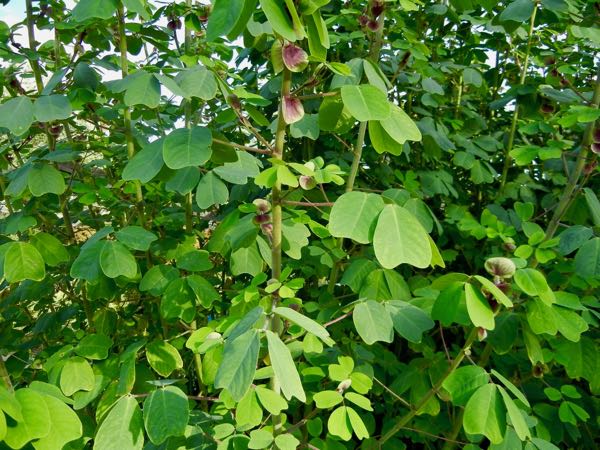Fabaceae: Exploring the Remarkable Pea Family
Fabaceae, commonly known as the Pea Family, Legume Family, or Bean Family, is a prominent group of plants that holds significant importance in the botanical realm. Belonging to the order Fabales, Fabaceae ranks as the third-largest family of plants, following Asteraceae (Sunflower Family) and Orchidaceae (Orchid Family). With approximately 751 genera and a staggering 19,000 species distributed worldwide, Fabaceae exhibits a remarkable diversity and wide-ranging ecological significance.
A Multifaceted Family of Plants
Fabaceae encompasses a wide variety of plant forms, including shrubs, trees, vines, perennials, and annuals. This diverse range of growth habits allows the family to thrive in various habitats and ecological niches across the globe. One of the key features that distinguishes Fabaceae is its characteristic fruit, the legume. These elongated, pod-like structures contain the seeds of the plant and are a defining trait of the family.
Additionally, Fabaceae species typically lack basal leaf aggregations, and their leaves are often compound, stipulate, and arranged alternately. Many members of the family possess tendrils, which aid in climbing and provide additional support for the plants. Notably, Fabaceae exhibits a unique symbiotic relationship with certain bacteria, as they form root nodules that facilitate nitrogen fixation. This remarkable adaptation allows many plants in the family to extract and utilize nitrogen from the air, contributing to their ability to thrive in nutrient-deficient soils.
The Monophyletic Legacy
Fabaceae is considered a monophyletic family, meaning that it consists of a group of organisms that share a common ancestor and possess derived characteristics exclusive to that group. This monophyly is reflected in the genetic and evolutionary relationships among Fabaceae species, highlighting their shared heritage and evolutionary trajectory. By tracing their lineage back to a common ancestor, scientists can better understand the intricate evolutionary processes and patterns that have shaped the Fabaceae family.
Ecological Significance and Human Connection
Fabaceae holds significant ecological and agricultural importance. Many species within the family form mutualistic relationships with nitrogen-fixing bacteria, which contribute to the enrichment of soil fertility. The ability of Fabaceae plants to convert atmospheric nitrogen into a usable form not only benefits the plants themselves but also provides a valuable source of nitrogen for neighboring organisms and subsequent plant generations. Moreover, Fabaceae includes several economically important crops, such as soybeans, peas, lentils, chickpeas, and various types of beans. These crops serve as essential food sources for humans and livestock, playing a crucial role in global agriculture and food security.
Appreciating the Fabaceae Family
The Pea Family, Fabaceae, stands as a testament to the diversity, adaptability, and ecological significance of the plant kingdom. From sprawling vines to towering trees, Fabaceae species showcase a range of growth forms and unique adaptations that have allowed them to thrive in diverse environments worldwide. Through their ability to fix nitrogen and their invaluable contributions to agriculture, Fabaceae plants have become intertwined with both natural ecosystems and human societies. By exploring the legacy and characteristics of Fabaceae, we gain a deeper understanding of the intricate relationships between plants, their environments, and the role they play in sustaining life on Earth.
Fabaceae includes six sub-families:
Caesalpinioideae
Cercidoideae
Detarioideae
Dialioideae
Duparquetioideae
Faboideae
Some of the better-known food plants in the Fabaceae family include:
Soybean or Glycine max
Beans or Phaseolus
Pea or Pisum sativum
Chickpeas or Cicer arietinum
Alfalfa or Medicago sativa
Peanut or Arachis hypogaea
Carob or Ceratonia siliqua
Genera in the Fabaceae family of plants: (A to B)
Abarema
Abrus
Acacia
Acaciella
Achyronia
Acmispon
Acosmium
Acrocarpus
Adenanthera
Adenocarpus
Adenodolichos
Adenolobus
Adenopodia
Adesmia
Aenictophyton
Aeschynomene
Affonsea
Afgekia
Afzelia
Aganope
Airyantha
Akschindlium
Alantsilodendron
Albizia
Albizzia
Aldina
Alexa
Alhagi
Alistilus
Almaleea
Alysicarpus
Amarenus
Amblygonocarpus
Amblytropis
Amburana
Amerimnon
Amherstia
Amicia
Ammodendron
Ammopiptanthus
Amoria
Amorpha
Amphicarpaea
Amphimas
Amphinomia
Amphithalea
Anadenanthera
Anagyris
Anarthrophyllum
Andira
Androcalymma
Angylocalyx
Anil
Anila
Anisolotus
Anneslia
Antheroporum
Anthonotha
Anthyllis
Antopetitia
Aotus
Apalatoa
Aphanocalyx
Aphyllodium
Apios
Apoplanesia
Apuleia
Apurimacia
Arachis
Aragallus
Arapatiella
Archidendron
Archidendropsis
Arcoa
Argyrocytisus
Argyrolobium
Arthrocarpum
Arthroclianthus
Aspalathoides
Aspalathus
Astracantha
Astragalus
Astyposanthes
Ateleia
Atelophragma
Atossa
Atylosia
Aubrevillea
Augouardia
Austrodolichos
Austrosteenisia
Baikiaea
Balizia
Balsamocarpon
Baphia
Baphiastrum
Baphiopsis
Baptisia
Barbieria
Barklya
Barnebydendron
Barnebyella
Baryxylum
Batesia
Batschia
Baudouinia
Bauhinia
Behaimia
Belairia
Bergeronia
Berlinia
Bikinia
Binaria
Bionia
Bituminaria
Blanchetiodendron
Bobgunnia
Bocoa
Bolusanthus
Bolusia
Borbonia
Bossiaea
Botor
Bowdichia
Bowringia
Brachycylix
Brachysema
Brachystegia
Bradburya
Bradlea
Brandzeia
Brasilettia
Brenaniodendron
Brenierea
Brodriguesia
Brongniartia
Brownea
Browneopsis
Brya
Bryaspis
Buchenroedera
Burkea
Burkilliodendron
Burtonia
Bussea
Butea


